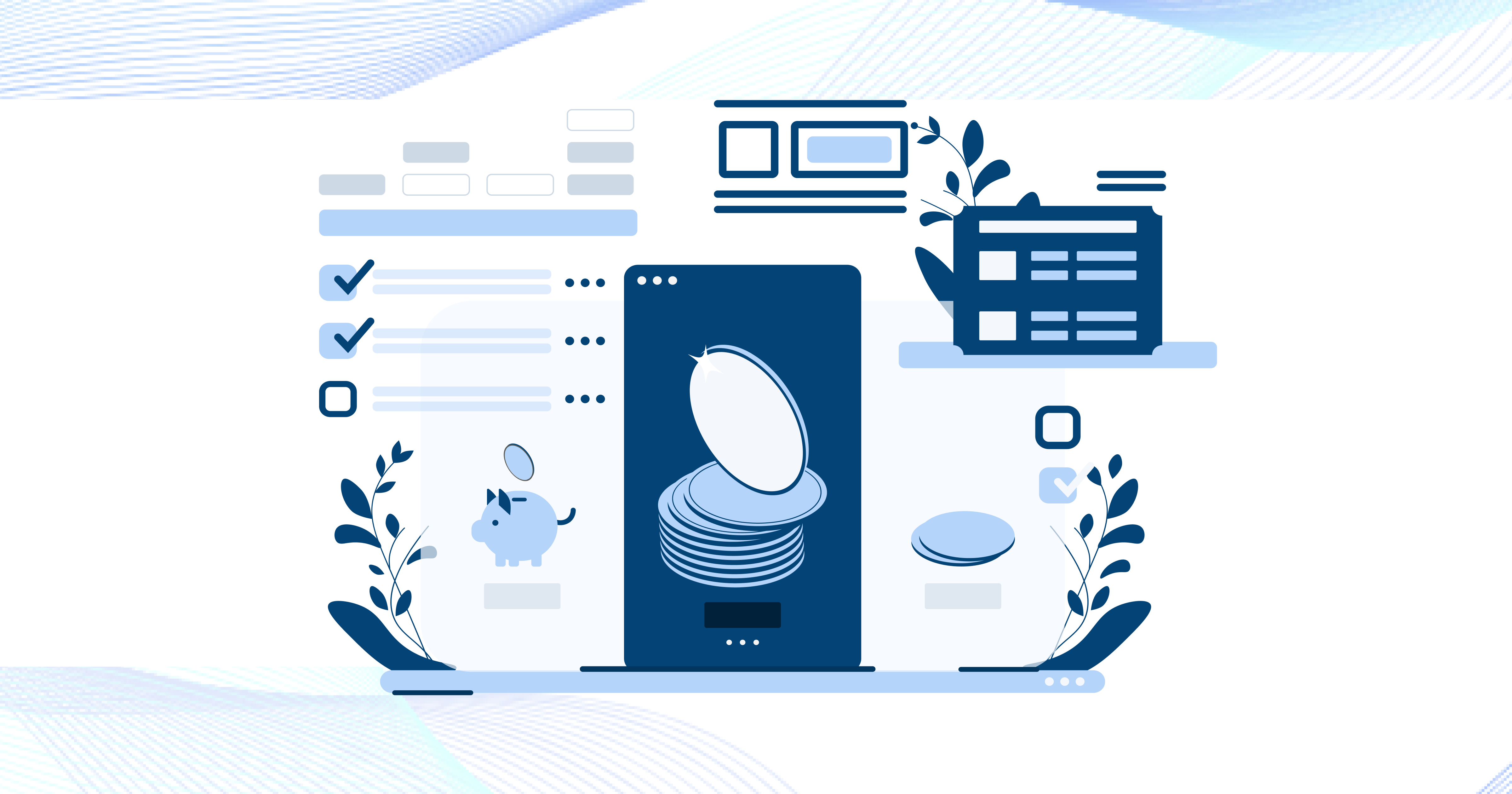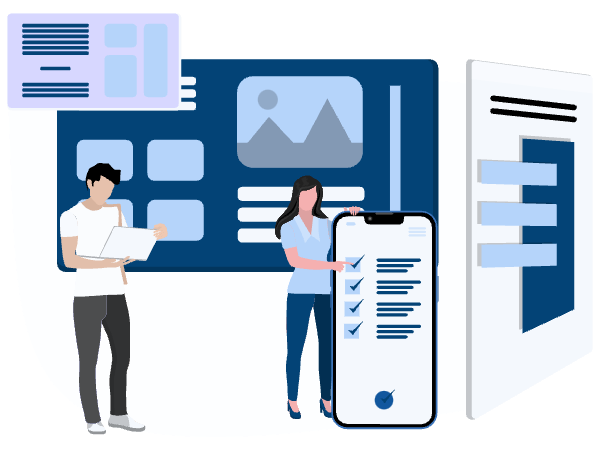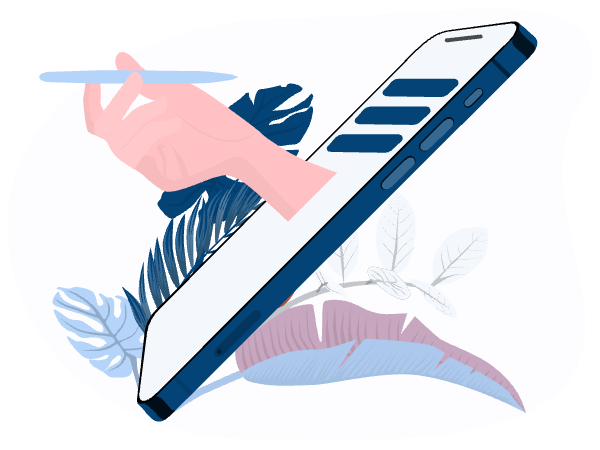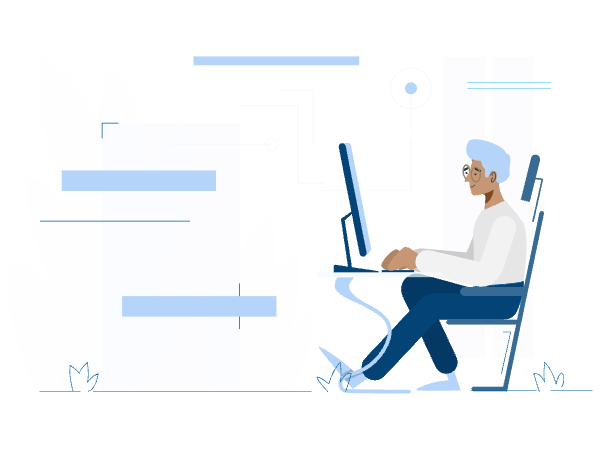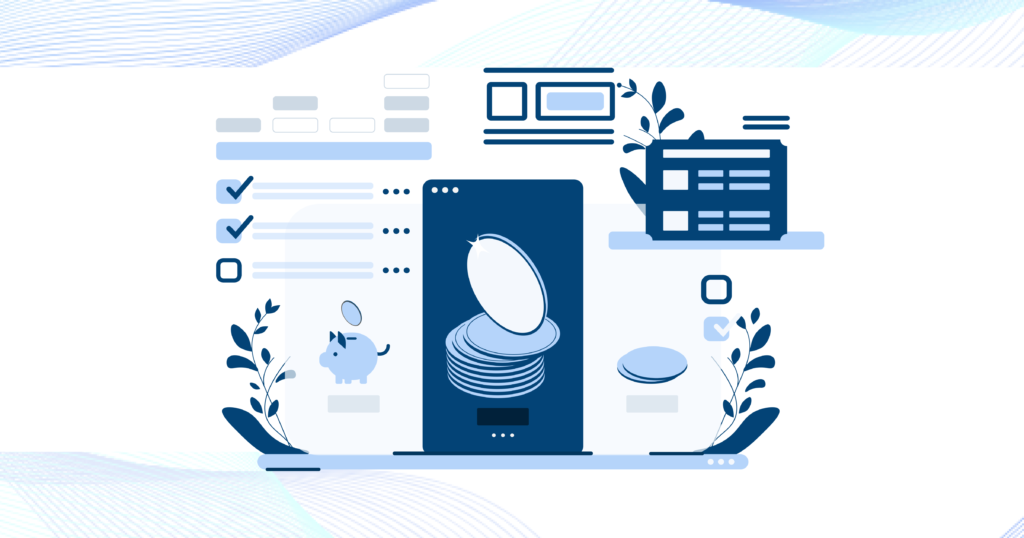
Unsecured personal loans are a type of debt product typically offered by banks and other financial institutions and aren’t backed by collateral to “secure” the loan. Unsecured personal loans typically require higher credit scores and income requirements. If you fail to make your payments on time, your lender cannot repossess any of your assets to recover the balance.
What is an unsecured personal loan?
Unsecured loans don’t require collateral or assets such as cash or cars to qualify.
Some refer to them as “signature loans” because that’s all you need to apply.
By foregoing any collateral requirements on unsecured personal loans, lenders charge higher interest rates than what you’ll typically find with secured loans backed by collateral.
The reason behind higher interest rates is that lenders don’t have any assets they can recover or repossess from you if you fail to make your payments on time.
For example, let’s say you take out a personal loan. You just lost your job and can no longer afford the monthly payments. When your account defaults, your credit score will be adversely affected, and lenders may begin formulating a plan for collecting the debt you owe. They have several options: They could follow up with you and encourage you to pay when you have a job, decide to bear the financial loss, or pursue you in court. However, they cannot seize any of your assets unless the personal loan amount is large enough to warrant a seizure through the courts.
Pros of unsecured personal loans
There are plenty of benefits to getting a personal loan, which we outline below:
No collateral requirement
To qualify for a loan, you don’t have to put up any collateral, such as cash in a savings account, cars, or other assets. If you’re strapped for cash & assets and need money immediately, an unsecured personal loan can help.
No risk of losing your assets
There are minimal restrictions when taking out a personal loan, so if you fail to make payments on time, you’re not at risk of losing your car or house.
Quick and simple application process
Unsecured personal loan applications typically take a few minutes, and most online lenders have automated decisioning processes, meaning you could receive an offer within milliseconds of applying.
Fast Funding Times
After receiving an offer and signing your contract, you could receive your funds in as little as an hour. However, most companies typically fund loans within 48 hours of approval.
Good rates for those with high credit scores
If you have a high credit score, you’re in luck. With credit scores above 660 – 700, your interest rates will be significantly lower, saving you thousands on your loan. Most unsecured personal loans typically start as low as 5.9% APR.
Cons of unsecured personal loans
Higher interest rates
To qualify for a personal loan, you don’t have to put up any collateral, meaning if you fail to repay, your lender can’t seize any of your assets to help make up the balance. As a result, lenders must increase the interest rates to account for potential losses.
Lower acceptance rates
By foregoing any collateral requirements on your loan, lenders must be cautious with whom they extend credit. Most companies that offer unsecured personal loans typically target the near-prime category, which includes people with credit scores of at least 600. As a result, the acceptance rates on unsecured personal loans are lower than what you’ll find with a secured loan, where lending companies and institutions take lower risks.
Smaller amounts
When calculating your offers, lenders look at more than just your credit score to decide. A key criterion is the loan’s affordability, I.e., can you support the monthly payments? If you already have many outstanding loans and your debt-to-income ratio is too high, the amount you may get approved for could be much lower.
Hidden fees
Another downside to unsecured personal loans is the hidden fees. Many lenders charge origination fees, late fees, application fees, and more. All the fees are listed in your offer and contract, so make sure you read and understand the fees your lender charges before accepting the loan.
Risk of getting sued if you fail to pay
If you took out a large personal loan and failed to repay it, you could get sued by your lender. You risk having a judgment brought against you by the courts, resulting in wage garnishments, a lien on your property, or a levy on your bank account.
Prequalify for an unsecured Personal loan
Walking into a supermarket, you typically browse around the isles, looking for deals. The same goes for personal loans. If you need an unsecured personal loan, you usually want to know if you’re getting the best deal. A great way to do that is to apply for prequalification through multiple lenders.
Prequalifying for a loan lets you check the interest rate, maximum loan amount, fees, and other potential terms without affecting your credit score or agreeing to take out a loan.
What you need to prequalify for an unsecured personal loan
To prequalify for a loan, lenders will want to know the following information:
- Loan type, amount, and purpose
- Personal information (first name, last name, date of birth, home address, social security number, phone number)
- Income information (monthly net income, additional income)
Unsecured personal loans vs. secured personal loans
Unsecured personal loans are known to have higher interest rates and lower acceptance rates. An unsecured personal loan may be right for you if you have a more robust credit score and little savings. If you’re new to credit or have a lower credit score, taking out a secured loan may be more beneficial for your situation. You qualify for a secured loan even if you have the worst credit score because you’re putting up assets as collateral that can be repossessed just in case you fail to pay on time. Every time you make a payment, your credit score will increase, and lenders charge lower interest rates than you’ll typically find with unsecured loans. Ultimately, whether you need a secured vs. an unsecured loan depends on your financial situation and what you need from the loan.
Alternatives to unsecured personal loans
After learning more about unsecured personal loans, you may have decided that you need something else. So, what are the alternatives to unsecured personal loans?
Payroll Deduction Loan
A payroll deduction loan is similar to an unsecured personal loan, except that monthly payments come directly from your paycheck. As a result, the risk of you not paying on time significantly decreases. Payroll deduction lenders like Stately Credit typically offer lower interest and higher acceptance rates because of the lower risk of default.
Payday Loan
Payday loans are short-term, high-cost loans generally for $500 or less. Taking out a payday loan may be your best option if you have a lower credit score and can’t qualify for an unsecured personal loan. A significant downside is the expensive interest rates that reach as high as 600% APR.
Credit Card
A credit card is a payment card that posts charges against a line of credit instead of directly out of your cash deposits. Your line of credit will accumulate, and you are responsible for paying it off at the end of the month to avoid interest fees. If you carry a balance on your card, you will be charged interest for every day you hold the balance. Using a credit card can be a great alternative if you do not qualify for an unsecured personal loan or wish to repay the entire amount you spend on your next paycheck.
How do unsecured personal loans work?
Before receiving a loan, you have to fill out an application. Online lenders will typically ask you for the following information.
- Personal Information
- Contact Information
- Income Information
- Employment Information
- Education
When you apply, the lender will check your creditworthiness by conducting a “soft credit check” with one of the three bureaus, Equifax, Experian, or Transunion. Factors like income, savings, debt, and payment history help lenders determine your qualifications.
Even though unsecured loans are only secured by your “promise to pay,” lenders have recourse if you fail to make payments on time. The first course of action will be lenders reaching out to see if they can help or set up a payment plan. If you do not cooperate, they may escalate the situation by sending your account to a debt collector or collection agency. Your late payments will impact your credit score, and the agency may even take you to court to garnish your wages as a last resort. If you end up in this situation, your credit score will take a severe hit, and you may find it challenging to qualify for other loans in the near future.
Should you get an unsecured personal loan?
Whether you need an unsecured personal loan or not ultimately depends on your financial situation and the reason for borrowing money. Suppose you need cash but feel uncomfortable offering collateral like savings, a car, or your house. In that case, you should consider an unsecured personal loan if the following criteria match your circumstances:
- Need to make a large purchase
- You have great credit
- You have reliable sources of income
- Consolidating expensive debt
Where can I get an unsecured personal loan?
If you need a personal loan, but having trouble finding the right lender, consider the following options:
- Online Lenders: A convenient way to search and compare personal loans online. Search for “Personal Loans” or “Online lenders” on google and have a look through all the most popular companies
- Loan Marketplaces: These platforms make it easier for borrowers to apply for compare loans. Instead of visiting multiple websites and filling out several applications, Online loan marketplaces help by collecting your information and showing you potential offers from dozens of lenders.
- Stately Credit: A shameless plug. Consider a payroll deduction loan with Stately Credit if you need an affordable loan. Lower interest, higher acceptance rates, and applying take less than a minute!
- Credit Union: These organizations are mission-driven and typically have very low-interest rates. If you are a Credit Union member, it’s best to check with them before you search elsewhere.
- Banks: Every bank offers personal loans; however, they usually take weeks to go from app to funding. On the other hand, they have low-interest rates if you can qualify. Search for your favorite bank on google and fill out a couple of applications to see if you are eligible.
Do I qualify for an unsecured personal loan?
To help mitigate risk, your lender will want to ensure you can repay the loan. Lenders measure your creditworthiness by reviewing a few factors, so they may ask you for the following information if you decide to apply for an unsecured personal loan.
Your credit score
When you apply, lenders will send your information to one of three credit bureaus to access a credit report. Your credit report will outline how you’ve previously managed your loans and credit products. Lenders want to see responsible credit use, on-time payments, and low credit utilization on your credit report. They also specifically check your credit score, a three-digit number ranging from 350 to 800. Depending on their strategy, most unsecured personal lenders have minimum credit score requirements. Some only accept borrowers with at least 660, while others may specialize in offering loans to individuals with lower credit scores starting from 500. If your credit score is too low, your application may get declined. Borrowers with credit scores of at least 700 typically qualify for the best rates.
Your income
Lenders need to know they have the necessary income to support monthly payments. They also want to make sure that your income sources are stable. If lenders cannot verify your income through one of the three major credit bureaus, they may ask for additional documents, such as pay stubs, to help verify your income.
Your additional income
Reporting any additional income you receive can help improve your chances of approval. If you fail to report your extra income and your primary income source isn’t sufficient to offer you a loan, you risk getting declined.
Your total debts
Lenders are interested in seeing your total debt amounts because it greatly determines how much to lend to you. If you have many outstanding debts, the amount you can afford to pay each month may be significantly less.
Your debt-to-income ratio
Lenders will take your total debt and income amounts and use them as the debt-to-income ratio. You calculate the DTI by adding all your monthly debt payments and dividing it by your gross monthly income. For example, if you $1,000 worth of outstanding debt payments, and you make approximately $2,000 each month, your Debt-to-Income ratio is $1,000 / $2,000 = 0.5 or 50%. If your debt-to-income ratio exceeds 40%, you risk the chance of getting declined.
Your payment-to-income ratio
To calculate your payment-to-income ratio, divide your monthly loan payment by your gross income. For example, if you monthly loan payment is $100, and your income is $1,000 per month, your PTI is $100 / $1,000 = 0.1 or 10%. The lower your PTI, the better because it shows that you can afford the monthly loan.
Your loan payment history
Lenders like to see your payment history on previous loans. If you are known for making payments on time, your chances of getting approved for a personal loan are significantly higher. If lenders access your report and find that you have 4 or 5 outstanding loans and 2 or 3 of them are more than 60 days past due, it would signify a significant red flag, and you risk the chance of getting declined.
Assets & Investments
Unsecured loans don’t require any assets or investments to use as collateral. However, lenders like to see that you have savings or investments. Lenders know that you’ll be less likely to miss a loan payment if you have an emergency fund to fall back on.
Transaction data
Lenders using transaction data to analyze your bank data is becoming more common. Lenders use cash-flow-underwriting models to help approve more loans. They use up to 24 months of your transaction history to identify trends in your cash flow to help approve or reject more loans.
How do I apply for an unsecured personal loan?
Applying for a personal loan can be done in a simple 4 step process. Most applications take under 5 minutes to complete. Here’s what you need to do if you’re interested in applying for a personal loan.
Check your credit score.
Some lenders focus on prime borrowers with excellent credit scores, others specialize in sub-prime borrowers with low credit scores, and many companies are in-between. The first step to applying for a personal loan is checking your credit score. Knowing your credit score will help you narrow down the type of loan and amounts you need.
Search for a lender
Search for specific online lenders using google, or use a loan marketplace to fill out a single application and receive dozens of offers. Either way, find a lender that offers loans to people with your credit score. If you have a decent credit score, you should probably see if your credit union or bank is willing to offer you a loan.
Get prequalified
Fill out a loan application to view your rates without affecting your credit score. Most, if not all, lenders will allow you to see your rate before accepting a loan. We recommend filling out 3-6 applications to help you compare and contrast different offers. If you don’t want to fill out multiple applications, use a loan marketplace to help streamline the process.
Submit documents and receive funds
If you’re happy with the rate, begin closing the loan by submitting any required documents needed to verify your identity or account. Once you’re verified, you should receive your funds within 24 – 48 hours. Stately Credit offers instant loan funding, and the money arrives in your account within minutes.
Applying for an unsecured personal loan with Stately Credit
Applying for a personal loan with Stately Credit is even easier. Unlike most loan applications, an application with Stately Credit doesn’t’ require you to type out any of your personal information. We prefill the entire loan application for you. Here’s how it works.
Step 1: Figure out how much you need
Similar to a traditional application, the first step to applying with Stately Credit is to figure out how much you need to borrow. You don’t want to borrow too much or too little, so make sure you review your requirements in detail before applying.
Step 2: Search for your employer and log in.
Search for your employer, and sign into your work account. If you don’t know your username or password, we have a straightforward process for helping you find your account details. Signing into your work accounts gives us access to use the personal information in your employment account to prefill the loan application.
Step 3: We prefill your loan application.
After logging into your work account, we prefill the entire loan application with information found on your payroll account.
Review your personal information to ensure there are no mistakes, and submit the application when ready.
Step 4: Receive an offer
We automatically calculate your offers and send them to you within seconds. If you’re happy with the rate, click continue and sign your contract. Simple!
